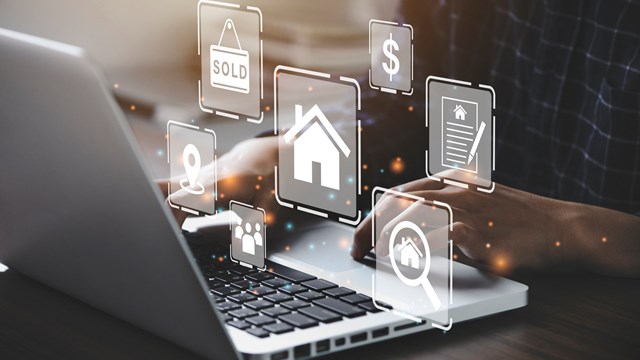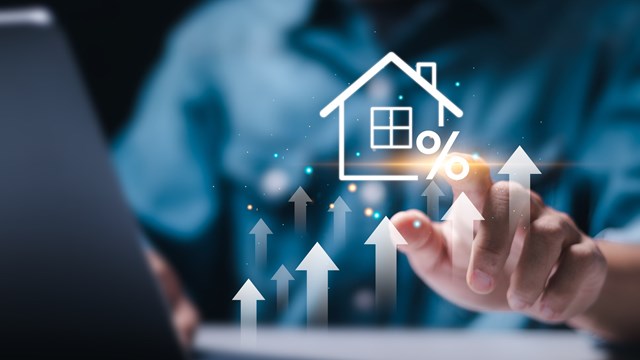As New York continues its efforts to reopen its economy as safely as possible amid the continuing (and in many states, intensifying) COVID-19 crisis, there is concern about what the residential housing market—which had experienced a decline even before the pandemic hit, largely due to changes in tax and conversion regulations, and overbuilding in the higher-end sector—will do. Will New York City see a recovery from what many already acknowledged was a soft market? How are brokers and real estate firms adapting to the demands of a public health crisis that all indicators suggest will be with us for the foreseeable future? The cross section of brokers polled for this story are hopeful about the market and committed to making the necessary adjustments to do business in a wildly different landscape from mere months ago.
Indicators
According to Jared Antin, director of sales at Manhattan-based brokerage firm Elegran, “Over the last four weeks, we have seen steady increases in the amount of new for-sale inventory. I expect those interested in selling their apartments to return to or come to market in the next several weeks. Going forward, and considering safety protocols, each seller should have a conversation with their broker about the showing procedures and policies to ensure that they protect their own health and safety, and that of all visitors.
“Sellers who don’t need to sell right away may wait until the pandemic subsides further and the market stabilizes,” Antin continues. “Those who have been eager to sell for the last three months probably won’t wait to come to market, and will likely price their homes to sell quickly.”
Overall, and in terms of the near future, Antin adds, “We expect there will be a surge of real estate activity now that we are in Phase Two. As witnessed in many other urban markets after the lockdown ended, there was a strong uptick in listings, appointments, and contracts being signed. Being confined to your apartment for three months is a good litmus test for whether you like your home, or crave something different or bigger. I believe that this summer will be a convergence of the spring, summer, and fall markets. Interest rates being at or near all-time lows certainly helps create additional incentive for qualified buyers.”
Ariela Heilman, a broker with Halstead in their Harlem office, concurs. “Interest is bubbling as we enter Phase Two. We hope the buyers will honor the new no-open-house reality and open their financial kimonos in order to make an in-person appointment. We had multiple offers on a tenant-occupied Brooklyn multi-unit, sight unseen. We also anticipate listings continuing to come to market now that the gates have opened. Frankly, I see pent-up demand accelerating sales over the next two months. Buyers who were preparing to buy and are still fortunate enough to be employed are moving forward with their plans. We are hoping for more inventory now in Phase Two, and less competition. For sellers, the need to sell remains and is now three months more urgent. Online search engines report a 30% rise in buyer engagement.
“The results of sheltering at home for 100-plus days have sharply focused many people’s needs,” she continues. “Downsizing sentiment is flipping to upsizing as more jobs have migrated to work from home,” and are likely to remain there.
Priming the Pump
Roberta Axelrod, Director of Condo Conversions for Time Equities, Inc., offers some constructive ideas for both New York City and New York State to consider to help the co-op and condo industry regain its footing on the heels of the pandemic and the negative factors that affected it prior to the arrival of COVID-19.
“Just as one can take a seemingly dead battery and revive it with the right charge and a set of jumper cables, we, too, can help to restart our economy with a charge of the right stimulus,” she says, and one of those stimuli is changing the condo conversion laws to make condo conversion easier again. “This simple stimulus formula costs no infusion of cash from the public sector,” says Axelrod. “To the contrary, it generates funds for the public sector in the form of city and state transfer taxes, income taxes, and filing fees. And most importantly at this time of high unemployment, it generates increased jobs, thereby reducing unemployment and the cost of unemployment payments from the government.
“Condo conversions,” she continues, “not only help to stabilize neighborhoods and improve old housing stock, they also create jobs and work for many types of businesses. In addition to development companies, they create work for contractors, electricians, plumbers, carpenters, security and building maintenance staff, architects and engineers, lawyers and accountants, advertising and public relations firms, advertising for newspapers, creative and web design firms, photographers, real estate brokers, mortgage brokers, lenders, title companies, furniture stores, lighting stores, decorators, appliance stores, hardware stores, etc.”
As part of a solution to the current volatile marketplace situation, another of Axelrod’s suggestions “is to once again permit condo conversions with 15% of units sold, while also including an affordable housing component. In effect, this will help those in need of housing assistance, [which is] an especially dire need with New York unemployment approaching 15%. An affordable housing contribution from both developers and purchasers on initial and future closings would be a source of private funds to help support this important and critical public need.”
Adapt or Die
As the market navigates its emergence from COVID-19 torpor, another question at the forefront of many industry professionals’, apartment owners’, and owner-wannabes’ minds is how the sales process itself—normally a very personal, contact-heavy experience—will change.
The real estate sales market—in particular, the individual apartment market (as opposed to that for entire buildings)—is a micro-inspection process. Apartments are not an impulse buy; buyers want to get into units, and they want to ‘kick the tires,’ so to speak. The insidious nature of COVID-19 disrupted the normal apartment showing and selling templates. Inspections of all types were prohibited, and that in turn affected every step from listing to closing—and even extended after closing, to move-ins and move-outs.
According to Elegran CEO Michael Rossi, “When we realized in March the gravity of COVID-19, we wanted our agents and staff to feel safe, supported, and informed. We approached this period as a time to focus on how we could return to the office in a position of strength and provide our agents with the resources to do so. Some of our efforts included increasing internal trainings, database clean-up, re-targeting and connecting with clients, securing PPE for our office, establishing safety protocols, and hosting weekly virtual meetings to discuss shutdown issues affecting our company and agents. We also established a recurring series of consumer-facing webinars to help consumers navigate this unprecedented environment.”
The next steps, says Antin, are forward looking, with a focus on adapting to a changed landscape. “In conjunction with the greater brokerage community in New York City, we have put together new protocols to ensure real estate transactions can be conducted safely and efficiently,” he says. “In addition to staying home if sick or exposed to others who are sick, key points include leveraging virtual tours wherever possible, following social distancing recommendations, wearing proper face coverings, and practicing good hygiene when in-person interactions are required. Specifically, attendees at appointments will be limited to only necessary participants. We will conduct multiple showings if needed to accommodate all decision makers. Additionally, showings will be by appointment only, with strict adherence to start and end times, in order to provide ample time to clean and disinfect the apartment before and after each showing.”
Safety First
Eric Benaim, CEO of Modern Spaces, a brokerage firm based in Long Island City, adds, “I’m part of the REBNY committee putting together guidelines for new procedures. These guidelines serve to protect the safety of not just brokers, but also homeowners and clients. Our firm is doing everything possible to prepare for NYC’s reopening.” When it comes to their workplace and staff safety, he says, “We’ve already begun doing multiple cleanings throughout each of our offices and have stocked up on PPE and cleaning supplies. We also conducted an agent survey to determine how comfortable our people feel about coming back to the office. We are separating workstations where possible, and in certain offices we will be implementing a schedule for agents to ensure their safety.”
Deborah Miller, a broker with Halstead based in their Harlem office, reports similar efforts to work within current circumstances, but at the same time to keep pushing transactions forward. “Our common goal is to minimize the spread of the virus by limiting in-person encounters. We are upgrading our online presence with additional videos, Zoom and FaceTime walkthroughs, and virtual open houses. We are talking in real time to buyers, sellers, colleagues, and prospects much more, sending fewer emails in favor of more live, person-to person conversations on phones and other electronic devices. As a requirement for physical access, some boards and managing agents are requiring that we prescreen visitors by requesting proof of funds and/or a pre-approval dated post June 1, 2020, as a prerequisite for scheduling in-person access.”
“Buildings are developing their own visitor, showing, elevator, and amenity-use policies, accordingly,” adds Antin. “It’s too early to tell exactly how consistent each building policy will be. Agents will need to stay on top of an ever-changing array of policies that are bound to differ from building to building based on the size, composition, and amenities of each.”
The months ahead will be by no means easy ones for the condo and co-op markets in New York. Already stricken by tax law changes and changes to the treatment of existing housing stock undergoing conversion, the market was not at its most stable. As Axelrod says, “While brokers see a light at the end of the tunnel, the health of the market may also depend on revisiting some of the changes that shook its foundation before the recent crisis.” One thing is for sure: a return to transactional business is coming, but it will look and feel very different than before the COVID-19 crisis. Nevertheless, New York’s brokerage community is ready.
A J Sidransky is a staff writer/reporter for The Cooperator, and a published novelist.










Leave a Comment